
Hello friends. I want to tell you about the cities I visited during my last trip to Austria. The first one was Graz. So when you think of Austria, which cities or places come to your mind? Probably Vienna first, then maybe Salzburg or Innsbruck. Or maybe that beautiful village Hallstatt. But most likely, you did not think of Graz, Austria's second-largest city. And that is quite strange. Because Graz is almost the perfect place to discover Austria. The beauty of its city center is on par with the capital, but there are far fewer tourists here. You hardly see any immigrants on the streets and life feels much calmer. Also, thanks to the universities and the city's considerable size, Graz feels much livelier than museum cities like Salzburg. So I arrived at a really impressive place.

Graz is located in the southeast of the country, quite close to the Slovenian border. It is Austria's second-largest city by population with about three hundred thousand residents. The historic city center is well preserved and still covers a significant part of the city. There is also a large private housing area here. If you plan to stay overnight, you can rent an apartment for around fifty euros per night. It even has free parking and you can reach the main square on foot in less than twenty minutes. In this square, you will find the town hall, a fountain, the city's oldest pharmacy and many other important buildings. But first I want to talk about the symbol of Graz. The clock tower that can be beautifully seen from the main square.
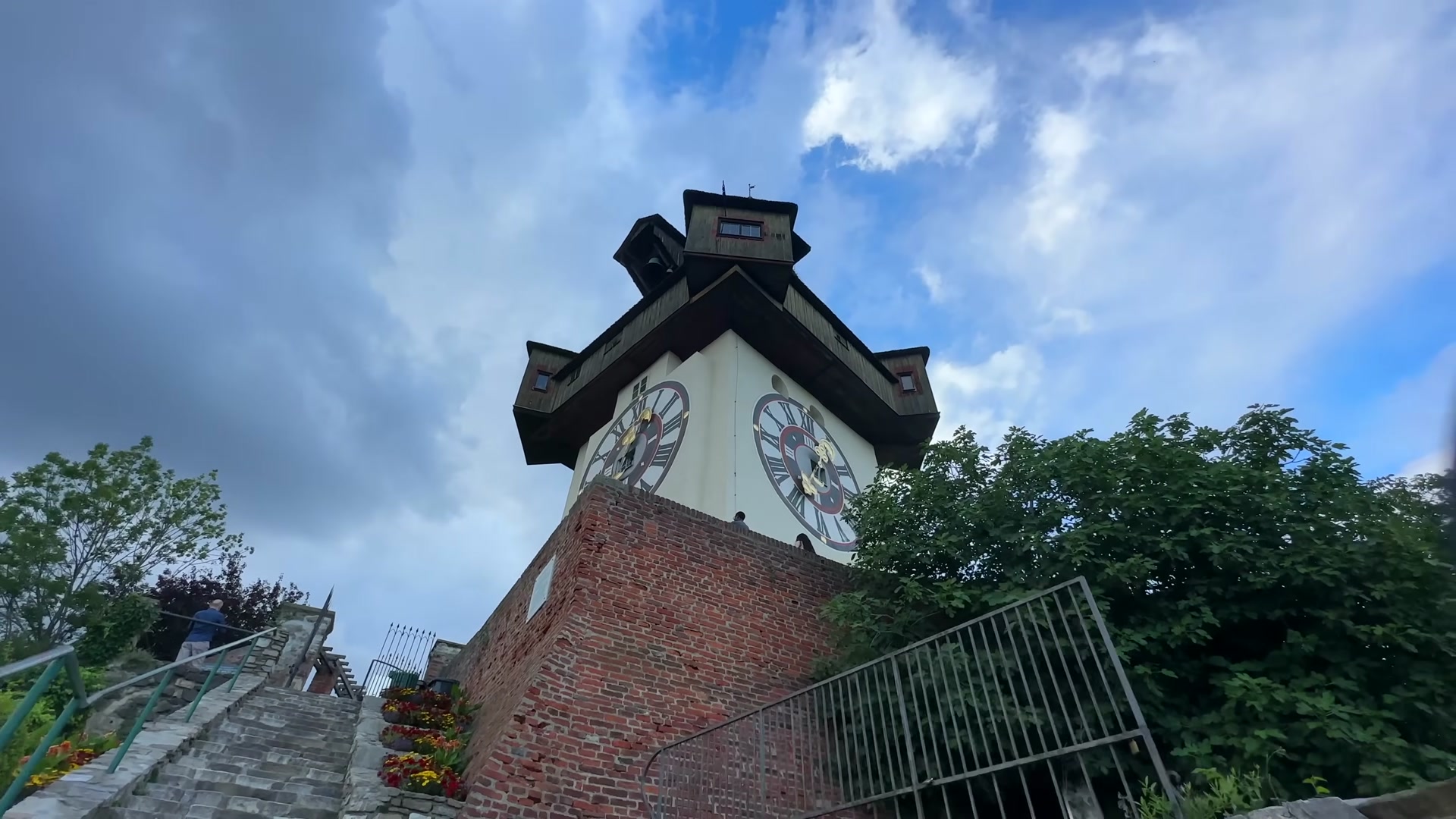
This clock tower was built in the tenth century. The funny thing is that originally it only had a single hand showing the hours. Later they added a second hand for the minutes, but the hour hand was already at maximum length. So they had no choice but to make the minute hand shorter. This clock tower became the symbol of the city after the Napoleonic wars. Until then Graz was famous for its castles. The fortress called Schlossberg used to rise above the houses. But after the events of the early nineteenth century, only the clock tower remained. The people paid a large ransom to save the tower. And I think time has proven them right. Today we can still touch the Middle Ages and at the same time look down on the modern cityscape.



The clock tower stands on a rather high hill. You can climb the stairs, take the elevator or ride the funicular. I chose to burn some calories. I recommend you at least use the stairs on the way down. You definitely will not regret it. And the climb is not as hard as you might think. It is about three hundred steps in total.
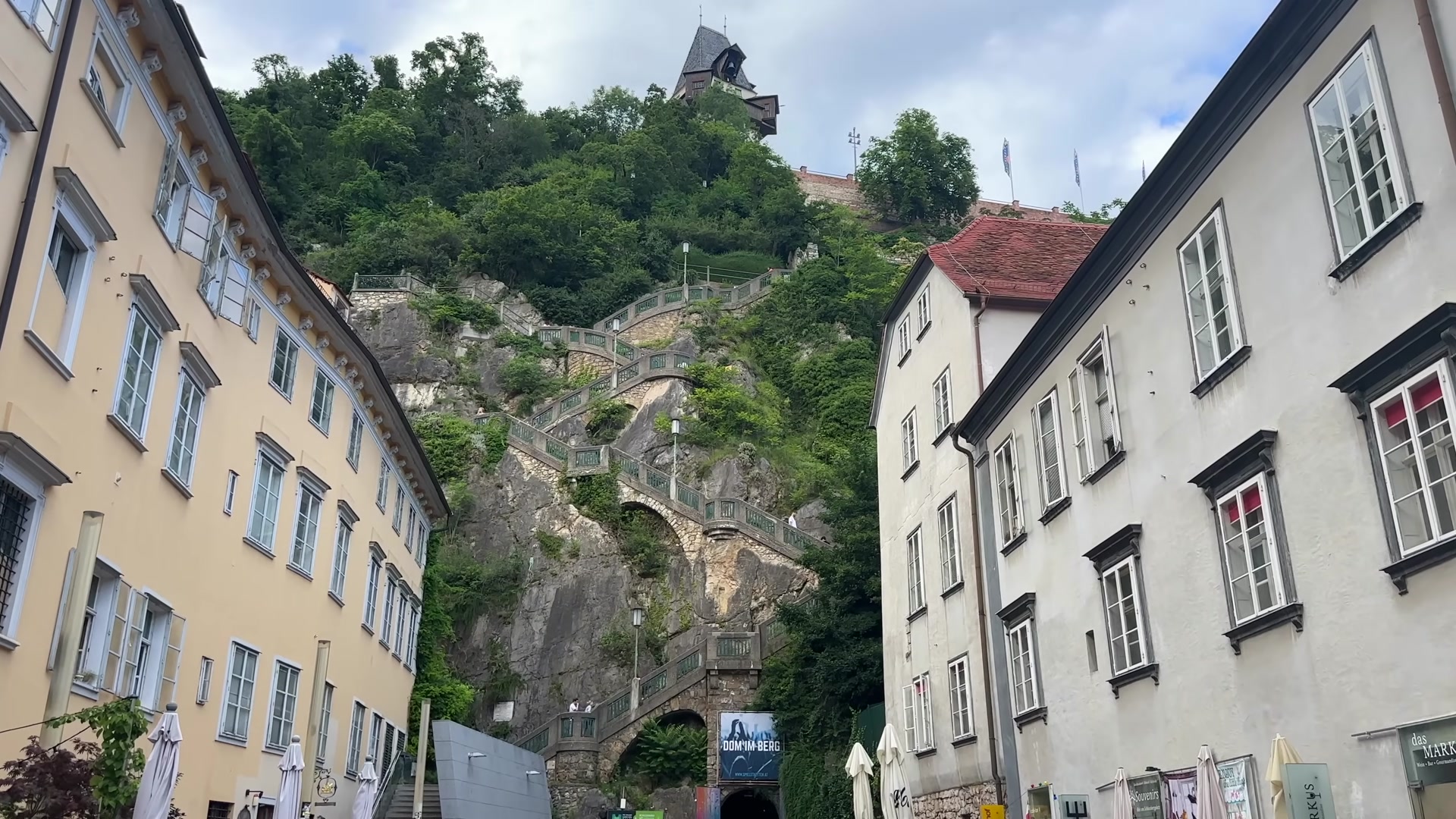
Now what would a man who is fanatically devoted to astrology and extremely rich do? Sounds a bit scary, right? That is how a place like this came into existence. Schloss Eggenberg. You probably did not expect this. But this is where grandeur meets a blind belief in the mystical power of numbers. For example, the massive complex in front of us has four large towers symbolizing the four seasons of the year. The ground floor has exactly fifty-two rooms representing the fifty-two weeks. The second floor has twenty-four halls for the twenty-four hours of the day. All of them connect at the Planetary Hall decorated with paintings representing the zodiac signs. And the number of windows is exactly three hundred sixty-five.

And here is the most interesting part. This project was entirely built according to that person's wishes. But the man died in sixteen thirty-five. The project was completed in the sixteen forties. So his children and grandchildren were left with a rather odd legacy. Honestly I would not mind inheriting a place like this either. The client, Prince Eggenberg, did not just think of the palace but also its surroundings. It stands in the middle of a large and well-maintained park. It is a bit far from the center, but you can easily reach it by tram number one or by car. The entrance fee is only two euros.



Since we were already out of the city center, I decided to visit another famous name. But this time not a prince. And not even a man from Graz. He was born in the nearby town of Tal. There was no way to get there without a car. On the way, we passed by amazing golf courses and spotless villages. If you are in this area, I definitely recommend stopping for a break. Yes, I am talking about him. The most famous bodybuilder in the world, Arnold Schwarzenegger.

He first started earning money in Austria by lifting weights. I guess there is no need to tell his story. He won every trophy in his sport. Then he became a producer, a successful businessman and made an incredible fortune. And on top of that, he became the Governor of California. Now there is a museum in his hometown of Tal that tells his life story.
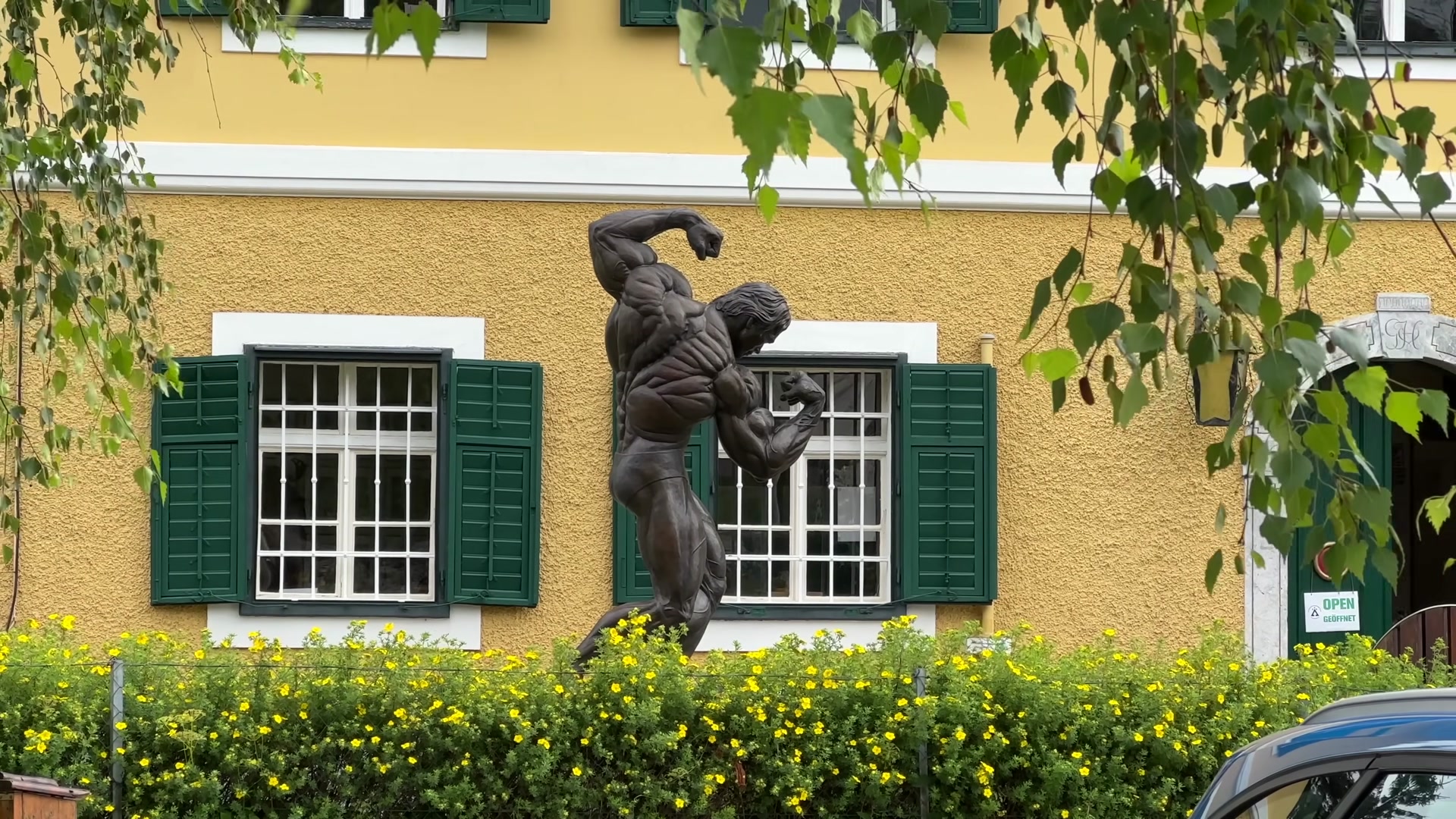
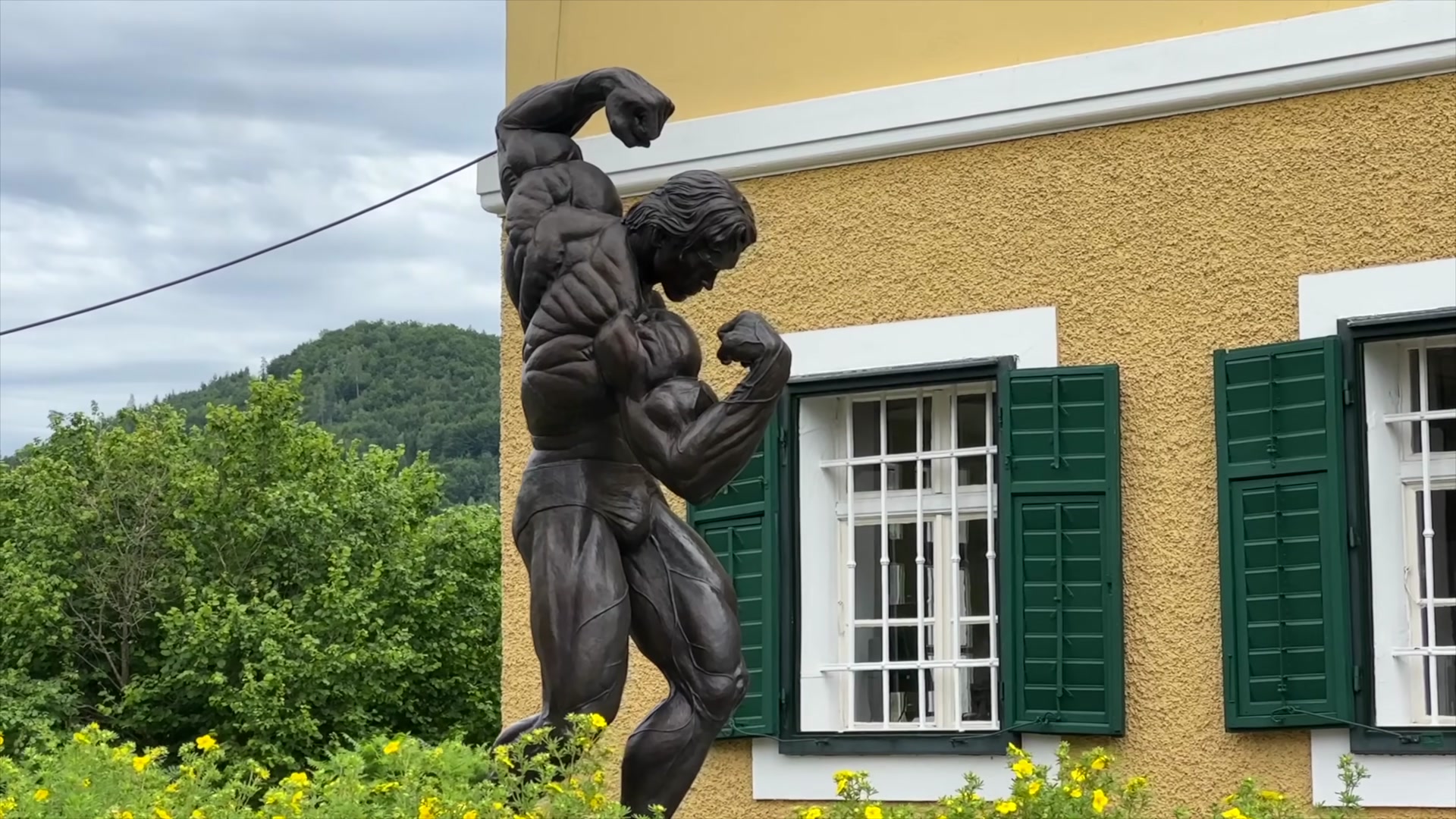
I think this might be the most powerful electric vehicle charging station in the world. It is nice to see such playful ideas. They even wrote So strong like Arnold. I love how much they cared about the details.
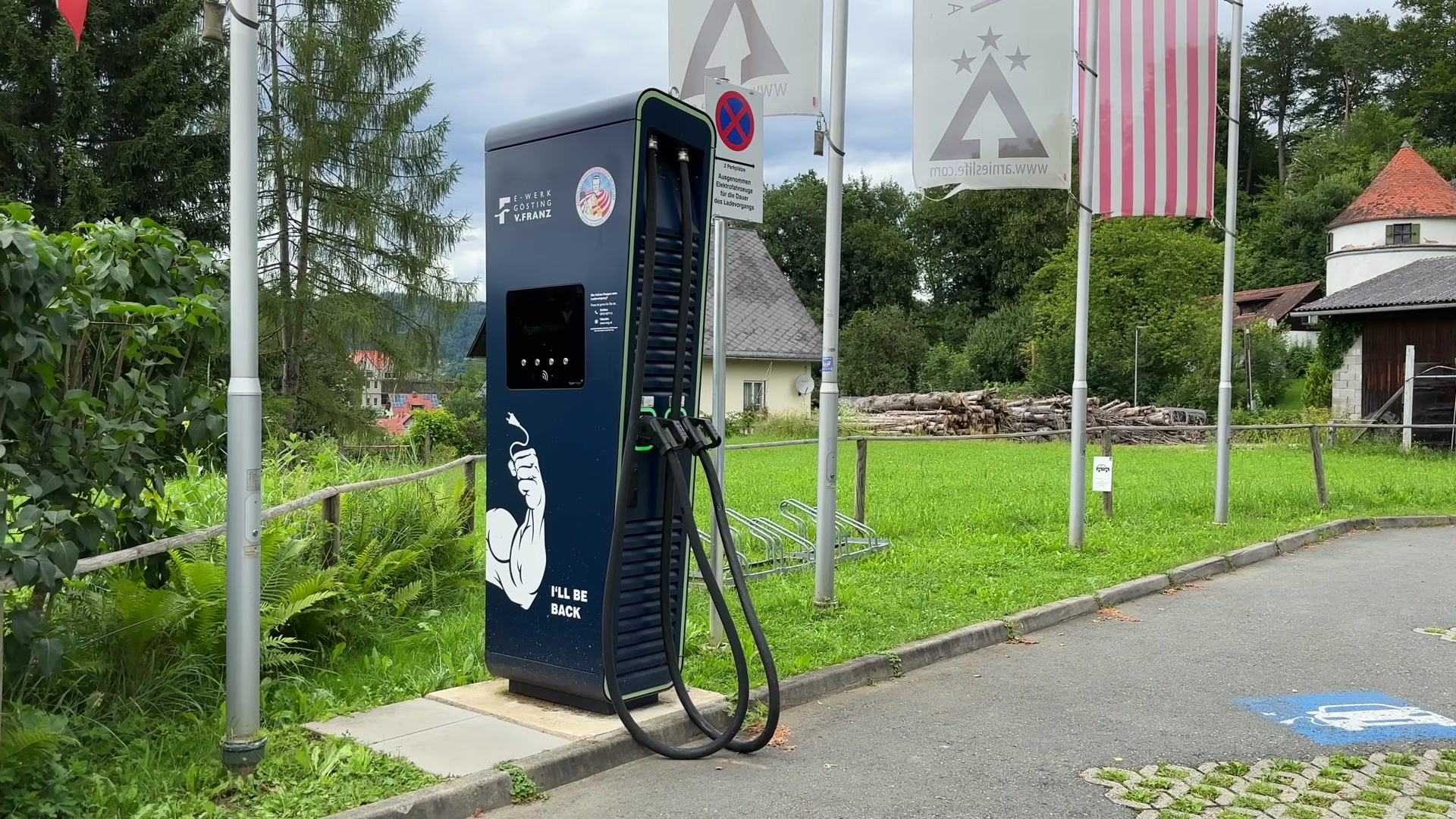
We probably visited the most legendary gym in the world. Because this is where young Arnold trained and took his first steps. And yes, the famous pull-up bar is still here. Almost every tourist wants to take at least one picture with that bar. Feeling like you are touching history and witnessing the birth of the modern gym industry is really amazing. It even feels like it gives you a little strength.

Then the real fun began. We went to the city center and just started walking around exploring. Our first stop was the mausoleum of Emperor Ferdinand the Second. This imperial family tomb complex was built in sixteen forty. The architect was Giovanni Pietro de Pomis. This Italian architect, born in Lombardy, also designed Eggenberg Palace. He is one of Graz's most important architects and I kept running into his works throughout the city. This mausoleum is one of his most striking buildings.
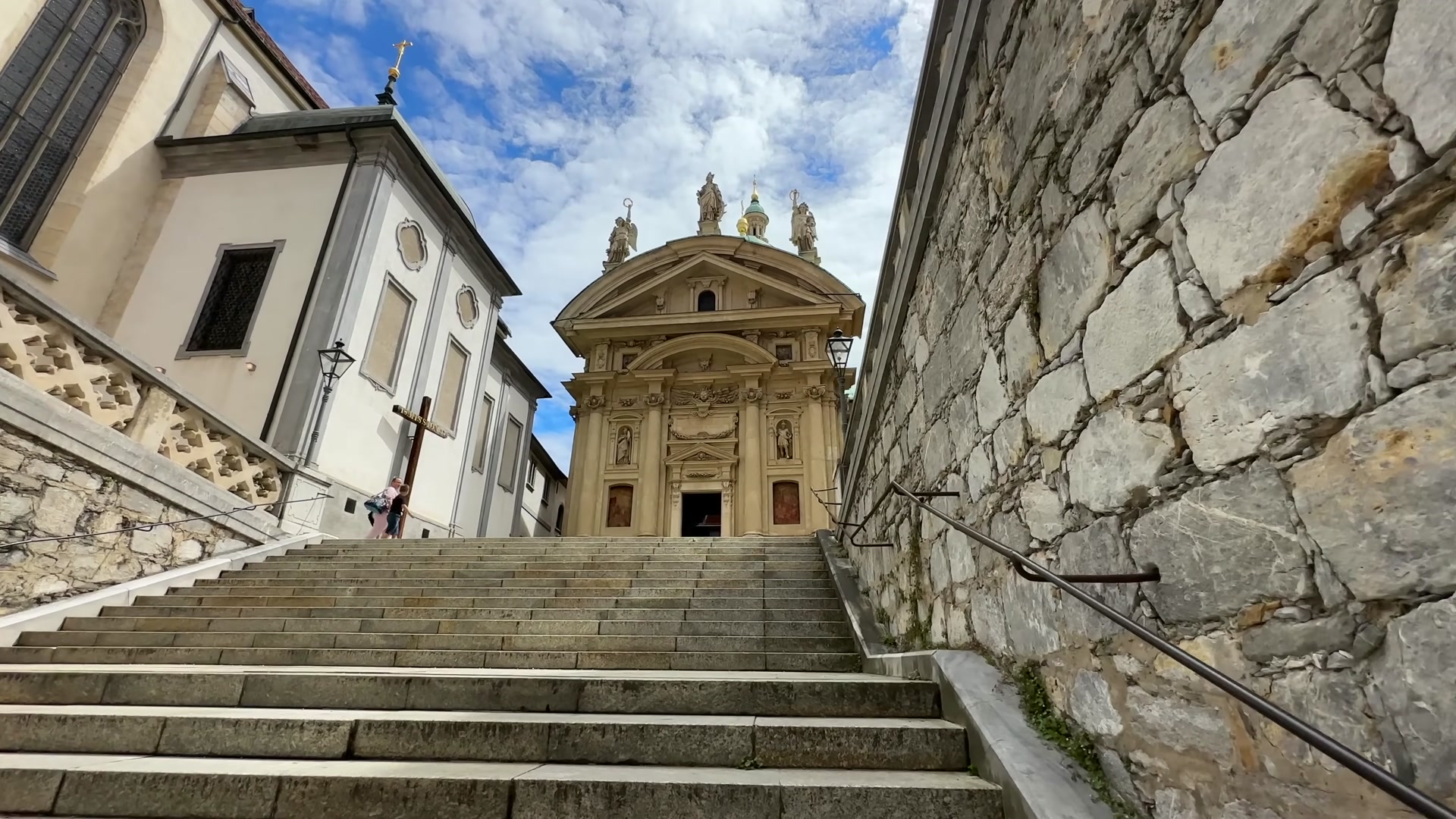
The area was quite crowded. Cars were passing by and because of the stone-paved streets preserved next to the asphalt, it was a bit noisy. Actually, that did not suit Graz much since the city center is focused on pedestrians and cyclists and cars are hardly allowed.

We stopped in the shade and started looking at Graz Cathedral, the city's main church. This cathedral blending Gothic and Baroque styles, was founded in the fifteenth century. It was later heavily modified by the Jesuits and gained its present Baroque features.

There are many historic churches in Graz, most of them from the fifteenth century. We got to see a few of them. Then we headed towards the remnants of the city walls on the eastern side. There is a beautiful park nearby and I definitely recommend visiting. Then we turned left and went to Graz Castle.

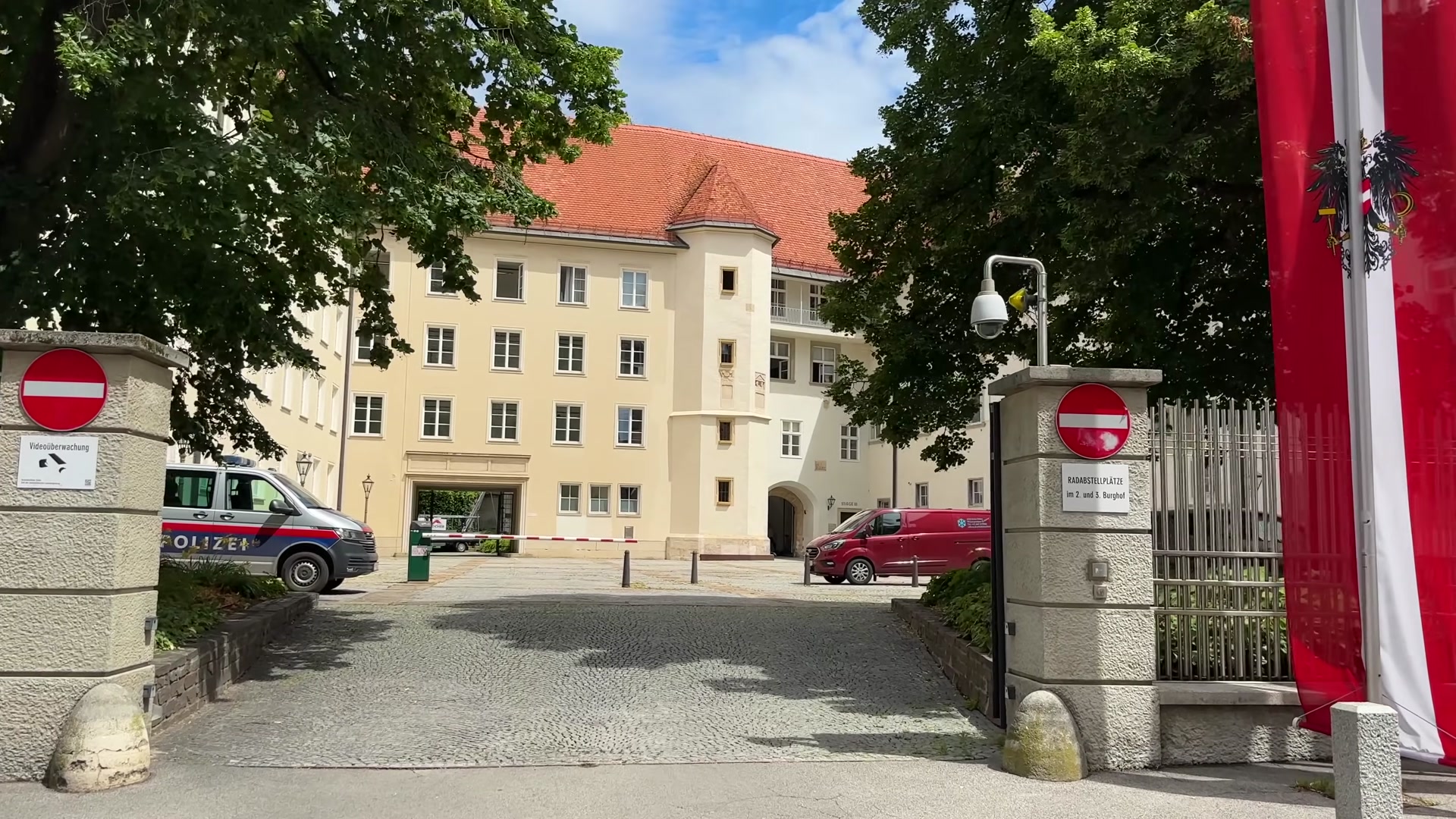
Apart from the fortress on Schlossberg hill, there is another castle in the city center. It was originally built for the city's defense and was even part of the city walls. Its construction started in fourteen thirty-eight. Over time, it was renovated many times. Today, it houses the administration of the state of Styria. But two of its courtyards are open to tourists. We visited one of these courtyards.
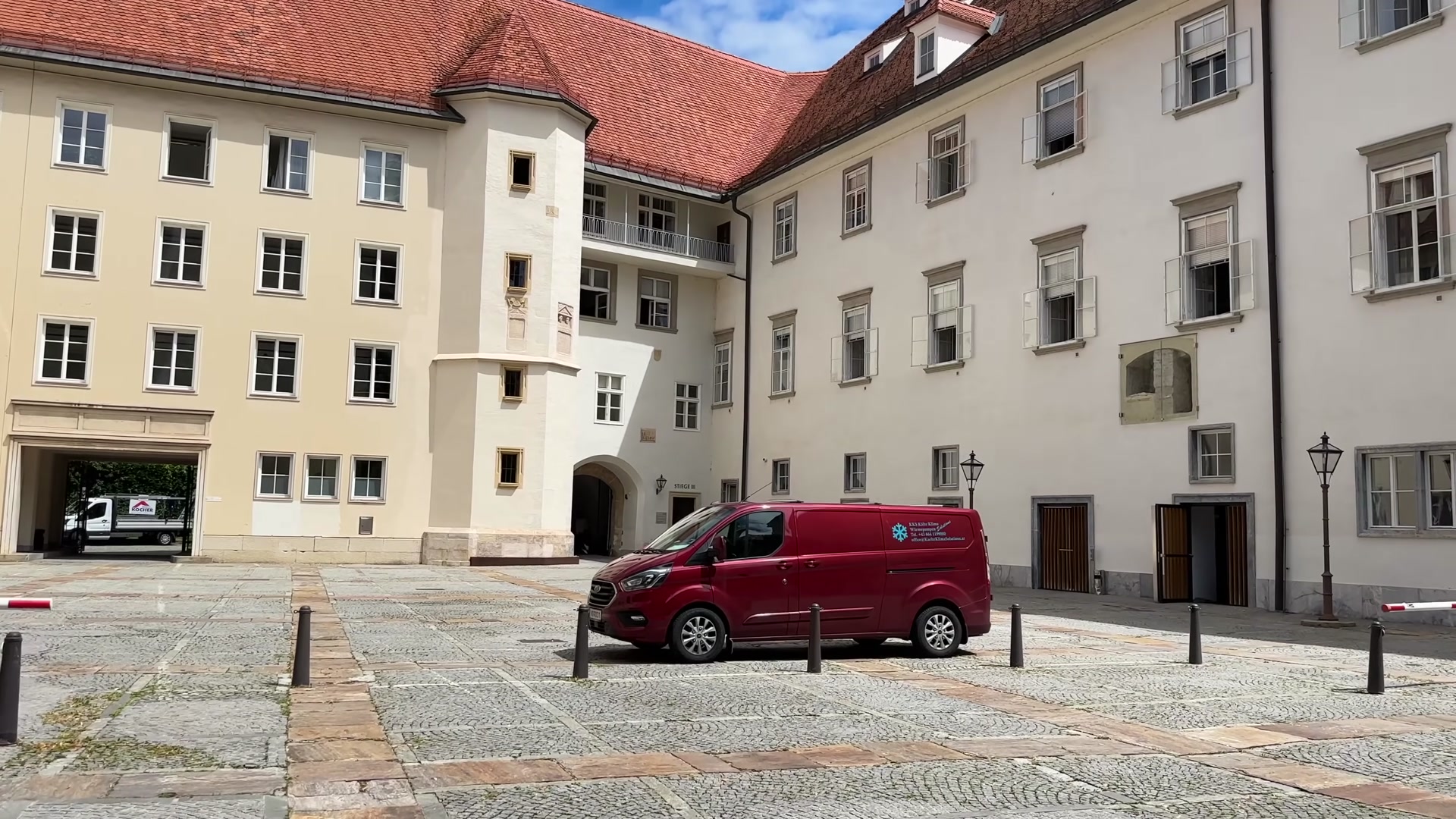

The real highlight here is the magnificent spiral staircase. This staircase is the most striking part of the castle. It twists to the right and left, then merges again and continues to the upper floors. An incredible structure.

We went up one more floor. And yes, the stairs merged again. That is why this staircase is sometimes called the Staircase of Reconciliation. Because no matter how much you split up, you reunite at every floor. You can even attach symbolic meanings to this. I immediately thought of European history. Neighboring countries fought for centuries and then made peace again. And this staircase feels like it tells that story. The real question is whether European countries climbed all the steps of this staircase and finally passed through the same door or if this is just another temporary peace. I hope that one day all countries stay on the same floor and never part ways again. Would that not be wonderful? This staircase is truly one of the most extraordinary structures I have ever seen.




On our left stood the peach-colored building of Graz's old university. And if you slowly turned to the right, you could see the faculties of finance and business. This was no coincidence. Because Graz has a population of three hundred thousand and sixty thousand of them are students. Imagine one in five people in the city is a student. I felt this very clearly while walking around the city, young people were everywhere.


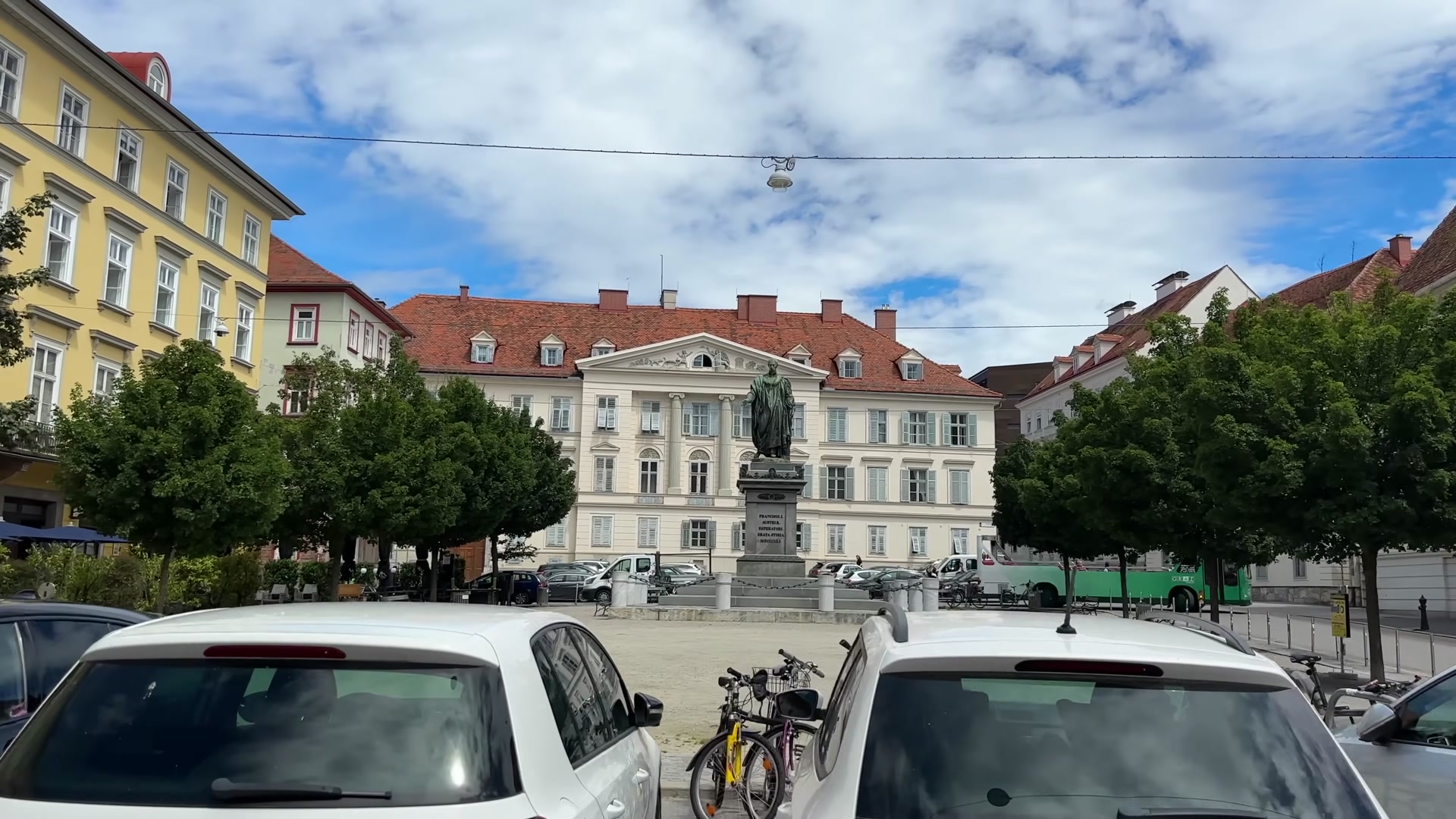
By the way I was really impressed by the open-top bus I saw. I had seen tour buses before, but never one that was completely open on top. A brilliant idea, especially for the summer.
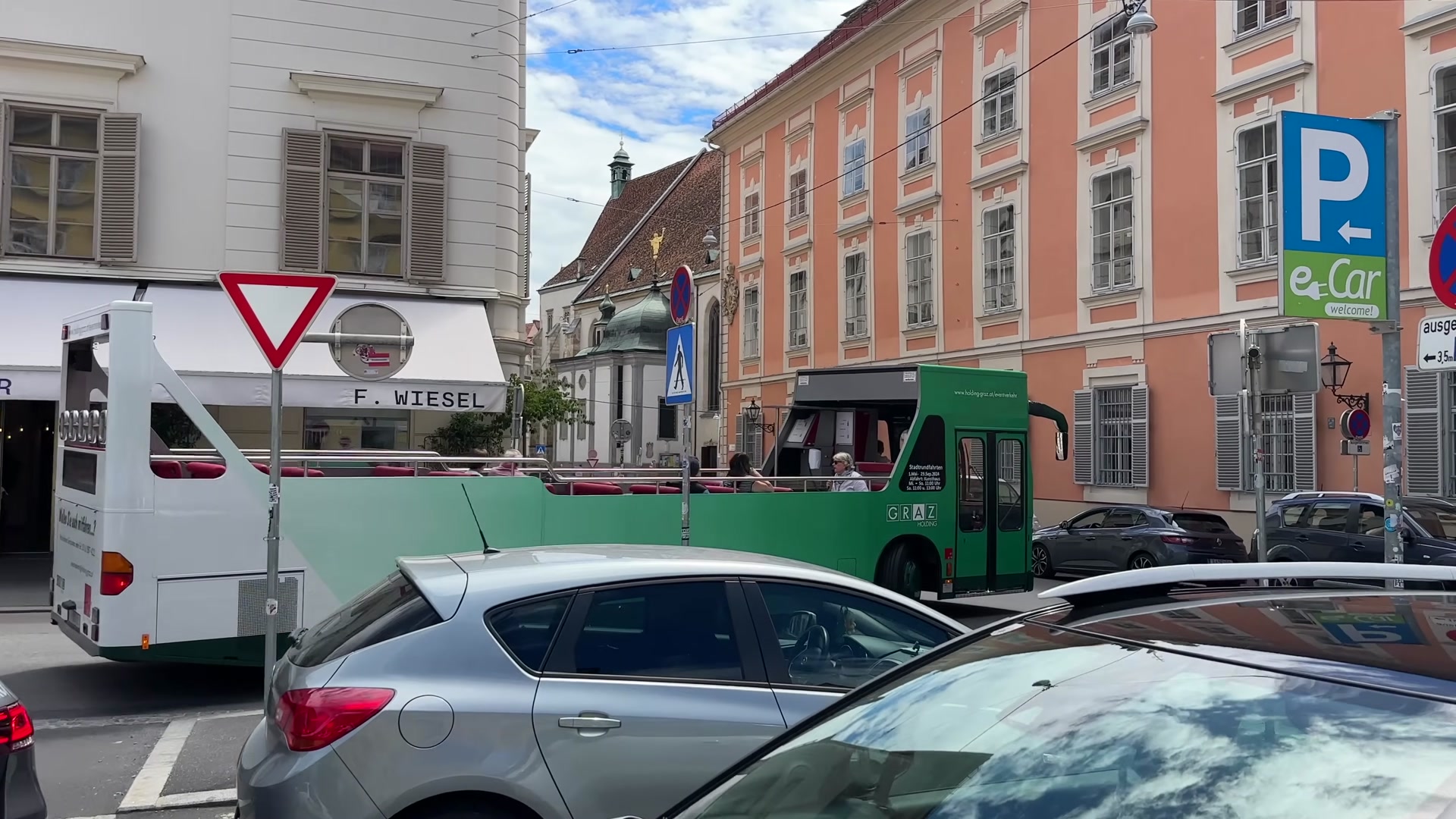
Another detail caught my eye as we continued walking. The stone blocks at the corners of buildings. These were once placed to prevent carriages from hitting the corners. You do not see them much anymore, but here they are still visible.




Then we came across a very special building. This is known as the oldest church in Graz. But what is unusual is that the church is hidden among ordinary houses.

We slowly approached Graz's Old Square. In front of us stood a magnificent building, decorated in baroque style and built in the sixteenth century by Dominikus Bosca.


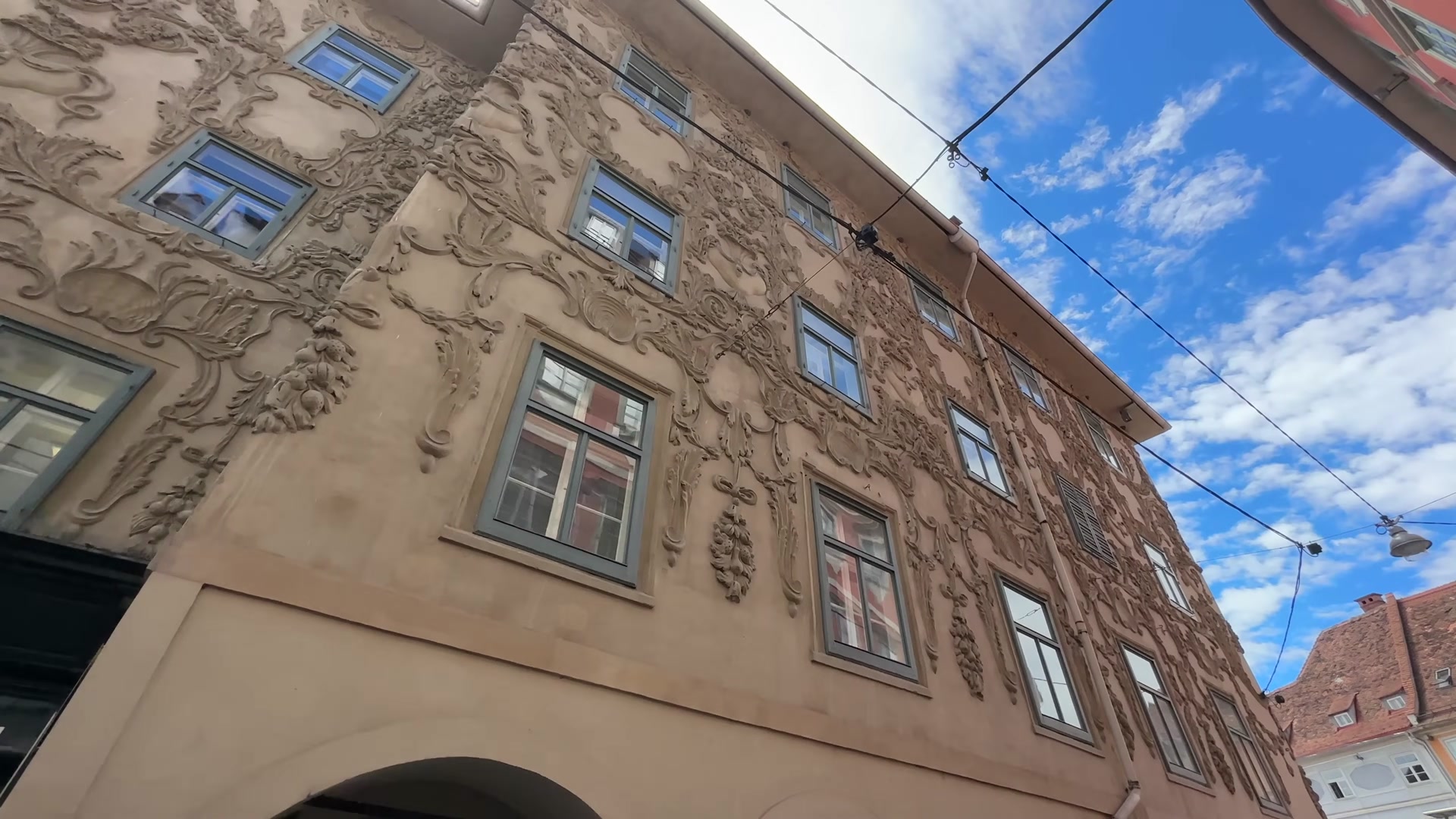
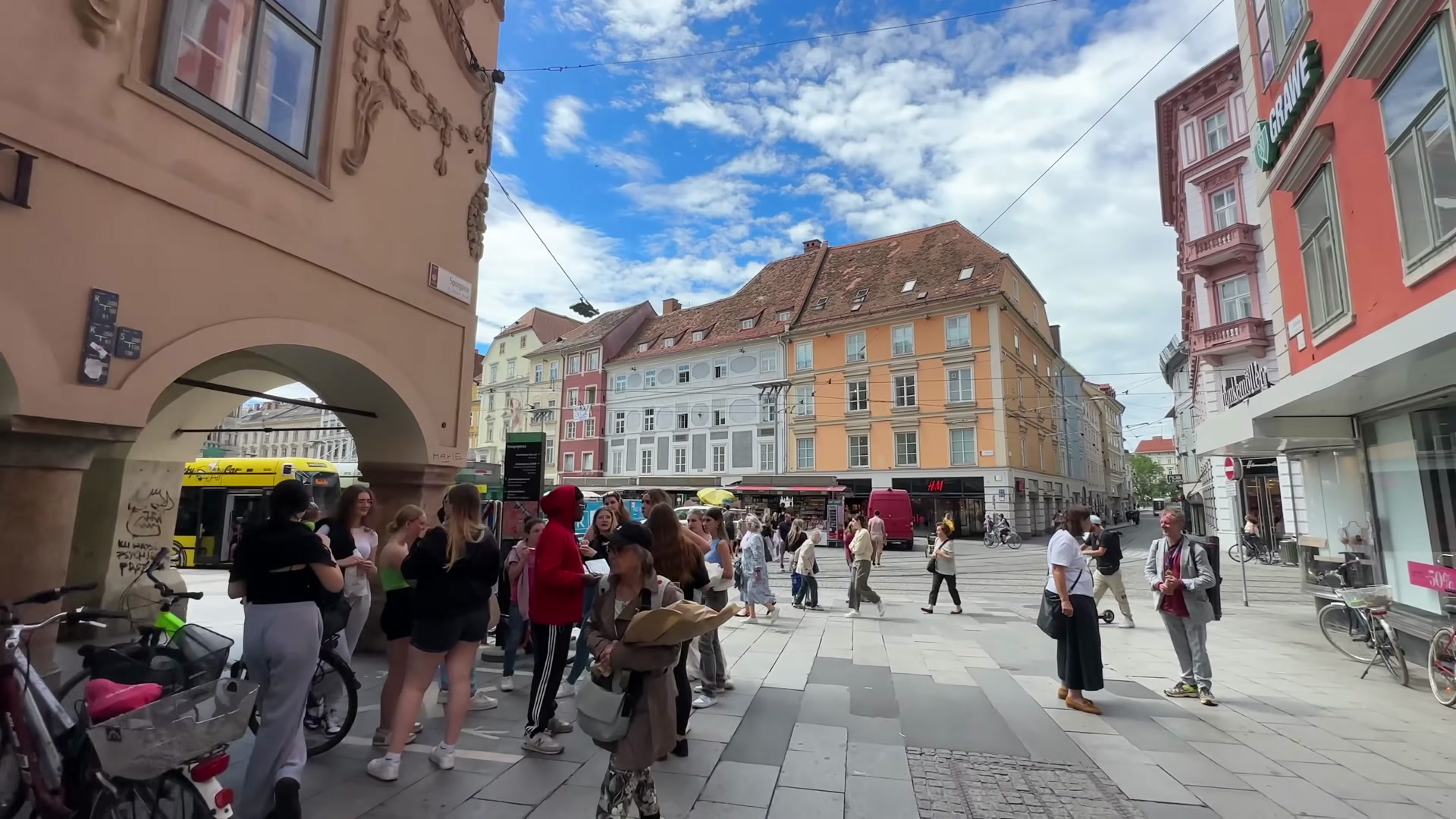
But I have to admit, I was a bit disappointed when I saw the square. Because instead of the charming historic atmosphere I expected, the center was filled with rather ordinary shops and stalls. I am sure you will share your thoughts about this place when you see it.

At least the town hall, the Rathaus is quite impressive. It was originally built in the fifteenth century but has been rebuilt several times. In its current form, it combines historical styles and features four statues representing allegories of science, art, commerce and economy.


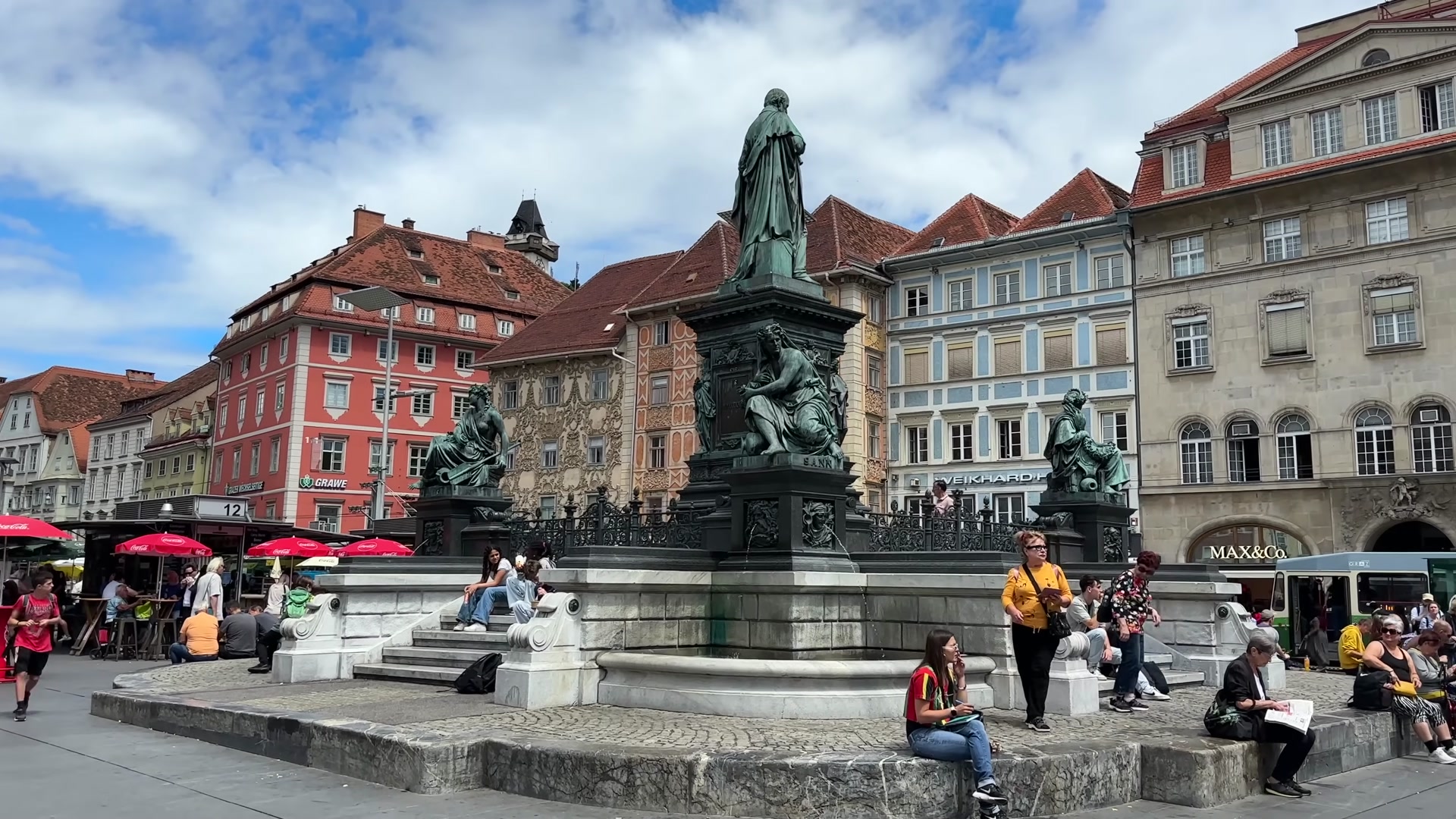
As we continued, I could not help but notice the packed bicycle parking areas and the bike lanes all over the city. Everyone in Graz rides a bike. Some carry their shopping, others commute to work. Thanks to electric bikes, people can easily cover even long distances. There are even speed limit signs. The bike rules are strictly enforced here. Riding under the influence or using your phone while cycling is strictly forbidden.


Then we arrived at the armory museum. This is one of the largest collections in Europe, displaying more than thirty thousand items. Because Graz served as a Habsburg outpost during the wars with the Ottomans, such a large collection of weapons ended up here.

As we kept walking, I notice the abundance of churches, the packed trams and the cyclists everywhere. In this city there is room for everyone. One moment a tram passes by, the next moment a cyclist rides past you. This constant motion brings a special kind of liveliness to the city.

And I reached one of the most interesting structures in Graz, the Kunsthaus. Locals even call it the Friendly Alien. It was built in two thousand three when Graz was named European Capital of Culture. Some see it as a masterpiece, others call it an ugly monstrosity. But in my opinion it fits perfectly with this city.
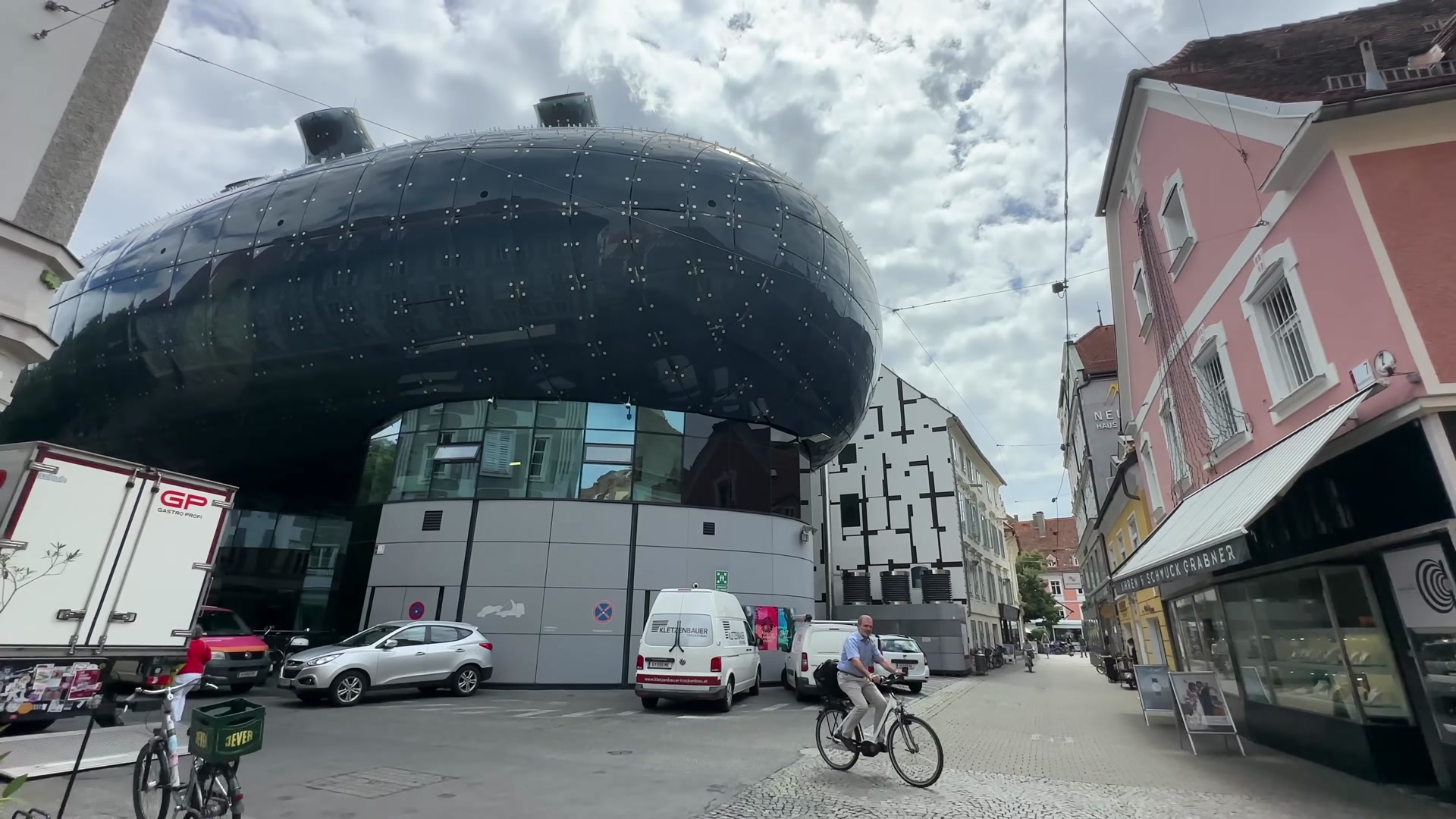
233.jpg (https://images.hive.blog/DQmSsbekriu36QE9LuPS6Mcvfd3otVNoHAhwtKibfjgmCvH/233.jpg)
Right beside it flows the Mur River. And on it stands a structure called the Murinsel, something like a bridge. It was built as a temporary installation in two thousand three but became so loved that it still stands today. There are cafes and event spaces on it. Especially at night with the lights on, it looks really beautiful.
031.jpg (https://images.hive.blog/DQmcJMzeF9yhhK1XVkwvyZWAPLacPkRxvdewHqE28sCGy6s/031.jpg)
080.jpg (https://images.hive.blog/DQmcspeW3Kt23BkKNz564b8vmqZm1f1GEUDsQpGXY2jNp5p/080.jpg)
119.jpg (https://images.hive.blog/DQmQhLAgCSyrkgEQTonqJEcUTAnNCZdYsQN8aj81yZWWcNJ/119.jpg)
130.jpg (https://images.hive.blog/DQmZVnEsWn4bNCqKpsrJmgN7JnfTwofZ7xpbTKacVbC4sLe/130.jpg)
458.jpg (https://images.hive.blog/DQmeb7iWKyCTuGf7Awahst91CcFXZUVoeCfdupL6PXZ6JC6/458.jpg)
479.jpg (https://images.hive.blog/DQmTPbho8yTyXe9APeRsvVRGD4QCtcZsy1UsaQUkJrZHRZd/479.jpg)
500.jpg (https://images.hive.blog/DQmNchW3CCPnkaqg9737FKx1eK59AatSnzT2YZzn9W9fszP/500.jpg)
My visit to Graz was completely by chance. I was only supposed to pass through, but I decided to spend a day here and I do not regret it at all. If this city feels as warm and inviting to you as it did to me, you might want to add it to your bucket list. See you in the next Austrian city.